Cost to Unblock a Drain
Last updated 1st February, 2024
Wondering how much does it cost to unblock a drain?
In this drain clearing article, you will discover all you need to know about unblocking drains and drain jetting cost (which on average is around £150-£200), including materials, labour and time frames required for drain unclogging.
Keep reading for more information!
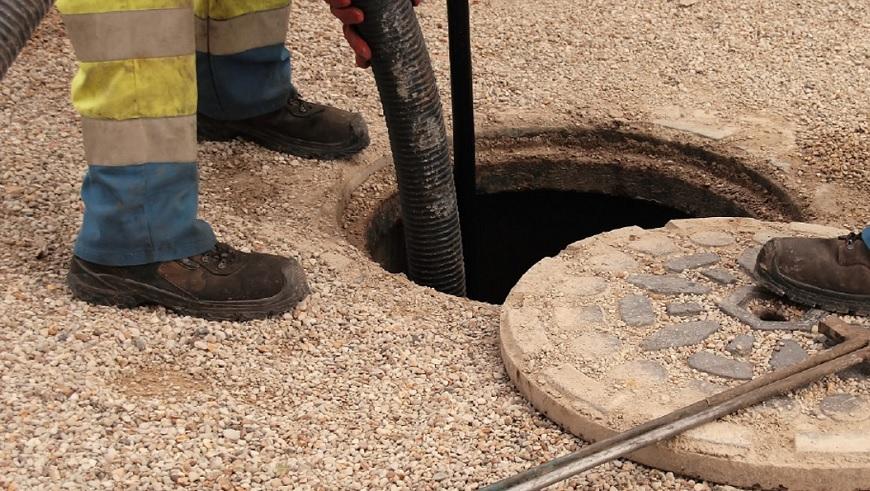
How Much Does it Cost to Unblock a Drain?
There are numerous factors that can affect the cost of drain unblocking and jetting, but the most notable are your location within the country (with London and the surrounding counties costing considerably more than the rest of the country), the size of the obstruction in the drains as well as the drain size itself, and the methods used to remove it.
If you are unable to unblock your drains yourself you can expect to pay an initial call-out fee of around £60 for a trained professional to visit your property and assess the issue, plus additional costs for the unclogging service provided.
So, how much will it cost?
If you're only dealing with a minor blockage, rodding may be a suitable solution, costing roughly £80 plus labour, whereas larger blockages may require jetting as well and will increase in price accordingly, to roughly £200 dependant on your location in the UK and the provider you choose.
Table of Contents
- How much does it cost to unblock a drain?
- Cost factors of unblocking and cleaning drains
- What does drain unblocking entail?
- What does drain jetting entail?
- Signs of a drain blockage
- Why do my drains need unblocking and jetting?
- How to prevent drain blockages?
- When to clean your drains
- DIY drain unblocking and jetting
- Who is responsible for unblocking my drain?
- Tenant or Landlord responsibility?
- Septic tank cleaning and maintenance costs
- Rat infestation in drain system
- Relocating or replacing drain
- FAQs
- Sources
Drain Unblocking Prices
There is no definitive price for how much drain unclogging and jetting costs, as the time and labour involved will vary from job to job, and quotes vary from different service providers.
However, there are estimates that you can expect for different unblocking methods. The average cost of unblocking a drain using rods and jetting is around £150-£200, assuming no major blockage, but increases with the difficulty of the job accordingly.
Before hiring a contractor you might want to check your home insurance as many policies cover drain unblocking and they may be able to contact a drain cleaning company for you, though there is often a £100 minimum call out charge if you choose to go through your insurance provider.
Most drainage specialists charge around £250-£300 per day and usually will be able to fix any blockage within a few hours. Below is a table outlining some of the potential costs involved in unblocking your drains:
| Method | Estimated Cost | Duration |
|---|---|---|
| Standard call-out cost | £60 | N/A |
| Emergency call-out costs | £180 | N/A |
| Drain Rodding | £80 | Up to 1 hour |
| Drain jetting | £175 | 1-2hours |
| Drain rodding and jetting | £200 | 1-2 hours |
Your service provider may advise a CCTV survey of your pipes. Some companies offer this free providing you purchase an unclogging service from them, whereas others charge up to £250 for the service. This may be necessary if clogging is a persistent issue, though not necessarily if it is a one-off incident.
A detailed survey of your pipes will enable the tradesperson to locate the blockage and determine who is responsible for the unblocking; whether it is yourself, a neighbour or the local utilities provider.
In addition to unclogging your drains, if damage is found you may be required to repair corroded or broken pipework within your property.
A popular method of repair is pipe-relining, sometimes known as ‘cured in-place pipelining’, and involves inserting a resin tube inside the existing pipework, snugly securing the damaged area and reinforcing the area, with costs starting at around £65 per meter.
This technique of repair is preferential in most cases to having to physically remove and replace your pipes, but is somewhat dependant on the amount of damage present.
Blocked drains can lead to disastrous outcomes if not attended to quickly, so it’s best to act as soon as you suspect issues with your drains and pipework.
If left for too long you may have to hire an emergency plumber, which will generally be charged at 2 to 3 times the standard callout cost – so it’s best to act fast to avoid extra costs in the long run.
Cost Breakdown
Individual costs for jetting a blocked drain - Total Cost: £200
Materials
£50
Tradesmen
£150
Waste Removal
£0
Labour Cost and Timescales
Explain the labour costs. How much a firm/tradesman will charge. How long will everything take. Each different part. Give a scale about how long each different part of the clean/unblocking will take. What might slow the job down?
Assuming the drainage expert has a minimum callout fee as well as task fee, you can expect a minor, non-emergency drain rodding to cost roughly £140 and take no longer than an hour to complete.
Larger blockages, or blockages that are harder to locate, will take more time to rectify and could involve additional work, such as drain jetting in addition to rodding, in which case you can expect a charge of roughly £250 for your drains to be cleared in roughly 2 hours.
Keep in mind that the timeframes used are guides and that there are a number of factors that can influence the overall price of the job – What may appear to be a blockage could, after investigation, be a different problem all together – such as a collapsed pipe.
Your trained professional should be able to identify the underlying issue and will be able to advise the best course of action to take, as well as a more accurate costing quote for you and the work required on your property.
Cost Factors of Unblocking and Cleaning Drains
Depending on the type and severity of blockage you are dealing with, there are a number of factors that can affect the overall cost of the job.
The average charge for a days’ labour by a drain cleaning expert is around £275, depending on where you live. In cases where the blockage is minimal and easily accessed, you can expect a professional to charge as little as £80, plus labour costs, to rectify the blockage using rods to break down the obstruction and can take as little as an hour to complete.
For larger blockages, your labourer may be required to use both rods and jetting to clear the obstruction – Because of the extra work and time involved, you can expect to be charged around £175 for both methods to be used, and takes an average of 2 hours to complete.
Be aware though that it may take longer if you have a particularly large blockage and will be charged accordingly, and that accessibility issues to the clog may cause the job to take longer to complete.
What Does Drain Unblocking Entail?
Before work is undertaken, the qualified drains expert will inspect your pipes and locate the blockage, as well as assess the severity and required removal method.
If the suspected blockage is within the pipes connected to your sink or bath, and is only minor, you may be able to rectify the issue yourself using a plunger – so it may be worth trying this yourself before you call for professional help to save on costs. If the blockage is moderate then plunging may not be sufficient and you may require rodding to be used.
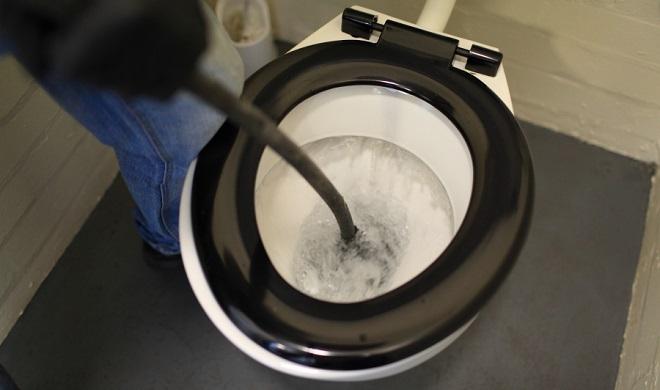
If the blockage is causing your drain covers to overflow or is stopping your toilet from flushing, the issue may be with the external pipework or sewers – Your tradesperson will inspect your property, checking access covers to determine the location of the block and decide the best course of action.
Generally, the professional will use a series of connected rods with a double helix attachment on the end, called a worm, to penetrate your drains through the appropriate manhole. Using a twisting and pushing motion allows the tradesperson to break the blockage apart.
Once the residual water level begins to drop your tradesperson may choose to swap to a plunger attachment to force through any remaining blockage into the connecting sewers, though this is not always necessary if the block has been sufficiently cleared.
Once the clog has been broken down your professional will then remove the rods and the drains will be flushed with fresh water; Often the homeowner is asked to run taps or flush toilets within their home at this point; this gives visual indication to the attending tradesperson that the blockage has been cleared, and helps ensures that remaining residue is carried into the connecting sewers.
Once satisfied that the blockage has been removed, your tradesperson will clear down any mess caused by the unclogging process and replace the cover over your drains.
If you are facing a more serious blockage, you may require drain jetting, or drain jetting in addition to rodding, which is covered in the next section.
What Does Drain Jetting Entail?
Drain jetting, sometimes known as water jetting or jet drain cleaning, is a cleaning method used to break down blockages located in drains and pipes by blasting a high-force jet of water through a flexible hose.
Once the obstruction has been located the hose is pointed at the offending blockage and the drain jetting machine is turned on; the impact at which the water hits the obstruction causes a break down in the materials, and with persistence the blockage is cleared.
You may find that in the process of unclogging the drains sewage and other unpleasant items escape from the open drain – your tradesperson will wash away any overflow that may have occurred during the unclogging process.
Signs of a Drain Blockage
There are a few warning signs to be aware of that may indicate you have a blocked drain on your property; Blocked drains are usually noticed when the toilet will no longer flush or the drain covers are overflowing.
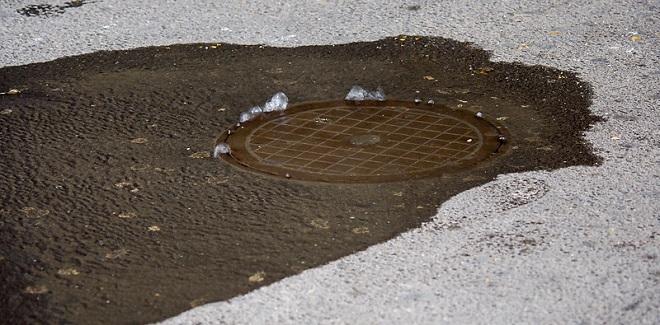
Another sign of blocked drains is often the awful smell of sulphur that the emits from them; indicating that gases are not being correctly forced through your drains likely due to a blockage. You may also notice that your sinks are emptying slower, or hear a gurgling sound when using your drains; this is caused air pockets being forced up your pipes to allow water through a narrowed passage.
Why Do My Drains Need Unblocking and Jetting?
There are a number of reasons why your drains may need unblocking or jetting. These include:
- Pipes too small for purpose
- Drain misuse
- Regular maintenance
- Assessing corrosion or damage
Structurally, you may find that your drain size is insufficient for the volume of use; smaller pipes mean less area for waste to pass through and can become particularly problematic once build-up occurs as it will restrict an already tight space and make waste passage a slower and more difficult process.
You may also be misusing your drains, allowing items to pass through them that could be detrimental to their effectiveness, such as oils, soap scum, hair, food particles and general debris that would be better disposed of elsewhere.
Most professionals recommend having your drains professionally cleaned and tested every two years because as with most things, prevention is better than the cure – regular maintenance can help prevent bigger problems occurring in the future.
How to Prevent Drain Blockages?
Arguably, the best drain clogging prevention method is to be careful about what you put down them in the first place. In kitchens, grease build-up tends to be the number one culprit of blocked drains; as it passes through your pipes it can cool and solidify, clinging to the surfaces of your pipe and creating build up which narrows the passageway.
Instead of pouring your grease away and potentially causing issues, collect it in empty bottles or containers and dispose of them with your regular household rubbish.
Similarly, small food partials, as well as hair and soap scum can be washed down your sinks and cause blockages when lodged; consider purchasing a sink strainer to help prevent this – sink strainers, or drain strainers, come in a variety of materials and are very cheap to purchase (from as little as £2) and can save you a small fortune in the long run as they help protect your pipework from foreign objects.
Your outdoor drains may be subject to clogging caused by leaves, debris and other foreign objects making their way into your sewers; cracks and breaks in your grates can allow for larger objects or pests to enter your system and should be rectified.
External drain grates start at around £5 each but are an investment worth making for peace of mind in the long run if your current ones need replacing.
Sometimes, even with the best care, you may find that drain clogging is out of your control but taking these steps will certainly help towards prevention of build-up.
When to Clean Your Drains
Regular cleaning is crucial for keeping drains running freely, so try to run hot water through the sink after every use to help flush out remaining debris from your drains.
For a slightly more intensive clean, many cleaning experts recommend putting a mixture of bicarbonate of soda and vinegar down your drains to help remove stubborn build-up, before it causes a blockage.
Take care to clean drains thoroughly with hot water if you have accidently put oils and other materials down drains that should be disposed of by another method; these substances are notorious for causing blockages and having costly consequences.
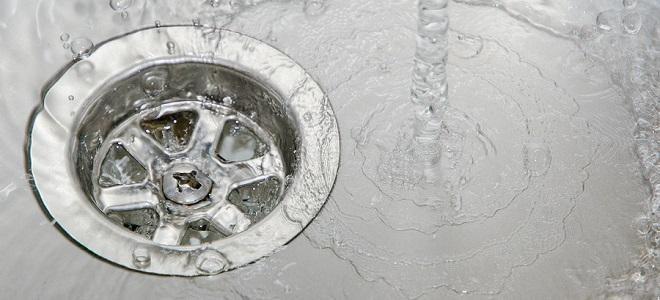
Check your external drains are clear of leaves and debris; leaves can be scooped out and put in the appropriate bin, leaving your drains are clear as possible and helping to prevent potential build up further down the line.
If you decide to flush your pipes with chemical cleaners, make sure to read the labels and follow instructions carefully, taking the necessary safety precautions such as protective gloves; many cleaners can cause damage to yourself and to your property if you’re not careful and you may find that, if misused, you could be faced with an expensive repair job.
Most professionals recommend having your drains professionally cleaned and tested every two years to ensure they are in good working order and to help identify any issues that may be arising; in these cases, they are likely to offer a jet cleaning service to thoroughly flush your pipes.
DIY Drain Unblocking and Jetting
Professionals agree that in the case of severe blockage it is not recommended that a homeowner attempt to unblock their pipes themselves; most of your pipework is not visible, the blockage isn’t always easily accessible and there may be a number of issues that the homeowner is not aware of or equipped to deal with themselves, such as in the case of a collapsed pipe.
Having said that, there are many situations in which it is perfectly acceptable to try and rectify a blockage yourself before having to call a professional for help. Below are some examples of DIY options to try to rectify your problem.
Use a Plunger
Depending on the severity of your clog, you may be able to dislodge it with a plunger. Plungers work by forcing water up and down your pipes using suction and compression to dislodge the blockage.
It’s recommended that the bell of the plunger is fully submerged in water for the best results, and you should avoid breaking the seal between the plunger and the basin where possible so that you don’t lose pressure.
If you don’t already own a plunger, they can be purchased from DIY stores or online from as little as £4.
Bicarbonate of Soda and Vinegar Mix
Many homeowners and cleaning experts recommend cleaning and unblocking your drains with a mixture of bicarbonate of soda and vinegar, ingredients you may already have readily available in your home.
Sprinkle the bicarbonate into your drains and then pour vinegar on top - when the vinegar reaches the bicarbonate it reacts with a visible fizz; the reaction is erosive and breaks down food particles and grease it comes into contact with.
Once the fizzing has subsided, flush your drain with hot water to wash away and remaining residue. This method is incredibly cheap at less than £5 around and could be all that you require for a minor blockage.
Chemical Cleaners
Most supermarkets stock a range of chemical cleaners designed to break down food residue at an affordable price. These cleaners typically cost anywhere from £3 to £20 for a decent quality bottle.
The active ingredients in most chemical cleaners are lye, peroxides or sulfuric acids – before purchasing one, check the label; is the cleaner compatible with your pipes? Some cleaners advise against use within weaker pipes and others are not suitable for use within plastic piping.
Due to the reaction they produce, you should never use chemical cleaners on a completely clogged pipe and you should always take safety precautions when handling chemicals, and try other methods before resorting to chemicals.
Drain Snakes
Drain snakes, sometimes called plumbers snakes or a drain auger come in a variety of shapes and sizes, and work by inserting though internal drains to break up blockages.
Unlike draining rods, drain snakes are flexible so they can curve with your drains, and are less likely to cause damaging collisions with your pipes.
Typically drain snakes are designed with rows of teeth to capture items such as hair that can be then pulled back up through your sink holes, which may otherwise cause a further blockage down the line, as well as being able to break up blockages.
Drain snakes can be purchased from around £5 for a multipack, and because they are disposable items you don’t have to worry about sanitising them after use.
Draining Rods
In cases where you are certain you can identify the blockage location it may be appropriate to rod your drains yourself. Draining rods come in a variety of materials and lengths, but generally speaking they are made of 1 meter long polypropylene tubing, known for its strong but flexible properties.
You can purchase a set of draining rods for around £15 to £25, with some packs offering different attachments such as a worm and/or plunger attachment or even a storage bag.
When shopping for your rods, opt for thicker tubing over thinner as this reduces the risk of snapping during use, and opt for brass end-fixtures as these are less subject to corrosion over use – other options are available, and may be cheaper, but they won’t stand the test of time.
If you do decide to rod your drains yourself, be careful – the rods are screwed together to the desired length and can detach or break during use if you’re not careful, or you may cause damage to your drains through misuse – In which case it’s likely you will need to hire a professional drain cleaner to unclog your drains and repair any damage you’ve caused in the process.
Water Jetting
Depending on the severity and location of your clog, you may be able to use a domestic pressure washer to help break down and remove the obstruction, if it is within reasonable access. A budget pressure washer can cost around £60 - £90, with higher range models costing up to £300 or even more, with factors such as attachments and maximum pressure output varying from model to model and affecting the overall price.
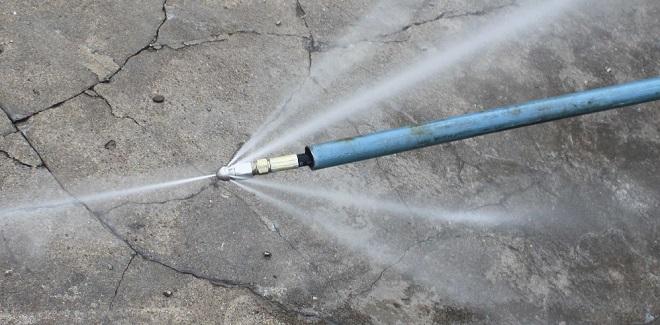
Hydro-jets can also be used to clear waste and debris, with the key difference being the much larger pressure output and increased price tag of around £3,500 for the unit itself.
Generally, most professionals will advise against homeowners jetting a clog themselves – As with any machinery, jet washers and hydro jets can be dangerous if mishandled and cause damage to you and your property; with a particular risk in this case to weaker pipes.
Some hydro jets, after all, are designed specifically to cut through pipes so it’s essential, if you insist of clearing the issue yourself, to make sure you are using a suitable pressure for your pipes.
Another factor to consider is that, because of the risk involved in jetting, you will need to wear extensive protective gear to minimise the health risks to yourself caused by mishandling of equipment and the waste that is often surfaced through jetting.
For the cost of the machinery that is guaranteed to do the job correctly, it’s worth hiring a professional to complete the job at a fraction of the price, with peace of mind that any damage that is caused is the responsibility of the worker to rectify.
Who is Responsible for Unblocking my Drain?
Responsibility for blocked drains is largely determined by where the blockage has occurred and the type of drain it is. For the most part the homeowner is generally responsible for drains that are inside the property boundary.
Drains from neighbouring houses causing issues on your property are the responsibility of the neighbour to fix; much like if your drains were causing issues to the neighbouring property, except in cases where homes have shared sewers, such as some terrace housing in which case it becomes the responsibility of the local water company.
Sewer issues and lateral drains are usually the responsibility of the water utilities company for your area as they are usually located outside of your property.
In this case if you are experiencing issues in this area you should contact the water company directly so that they can amend the issue who will be required to attend to the issue as soon as possible due to the potential environmental and health risks involved with sewerage issues, as well as the risk of damage to the sewers themselves.
In some instances, sewers are ‘unadopted’ or privately owned, in which case it may also be your responsibility to repair and maintain them.
Some home insurance companies insist that you have cover for the drains inside your property, whereas others do not specify drain cover, and you should also be able to take out insurance for your drains independently if you so choose.
Tenant or Landlord Responsibility?
Unless specified within a tenancy agreement there are no set ‘rules’ for who is responsible for dealing with clogged drains on a property between a tenant and a landlord.
In most tenancy agreements, generally speaking, minor blockages are considered the responsibility of the tenant to amend, such as a clogged sink, whereas more substantial – and ultimately costlier – blockages tend to fall to the landlord for rectification.
If the tenant is new to the property and an issue with the drains has been identified it is usually the responsibility of the landlord to fix regardless of how minor the issue may be, and if blockages become a recurring issue it could be indicative of larger issues elsewhere within the pipeline – which would, again, become the responsibility of the landlord to fix.
Septic Tank Cleaning and Maintenance Costs
In some cases, where it is not viable to connect a home to a main sewerage line, a septic tank is necessary on the property. A septic tank acts as a “holding pen” for waste materials passed through your plumbing system within a property that will need to be cleaned and drained on average once a year, assuming the septic tank capacity is adequate for use.
Failure to empty a septic tank can be disastrous for your property as once the tank has reached its capacity level you run the risk of waste running back into your home – which could be a costly issue to rectify, and rather unpleasant to clean due to the sludge that is created in the tank itself from waste materials.
Unlike drains that are linked to a sewer system it is not recommended to flush bleach through your pipes in order to clean them – the bleach acts as a biocide and will kill the active bacteria in your septic tank, decreasing efficiency of your unit. Below is a table outlining some basic maintenance costs of septic tanks.
| Job description | Cost | Timeframe |
|---|---|---|
| Empty small septic tank | £100 | Less than 1 hour |
| Empty small septic tank | £200 | Up to 2 hours |
| Replacement soakaway system | £600 | 1 day |
On average, septic tank soakaway systems will need replacing every 10 years or so, depending on use and condition.
One of the most common issues people face with their septic tank is the smell; and the smell indicates that the biomasses present within the tank are no longer active, or ‘alive’, or you simply have too much waste.
This usually results in having to hire a desludging company to empty your tanks, ’backwash’ the tank to remove any harmful chemicals in your system that may have had an adverse effect on the internal environment and replacing the necessary bacteria within the system.
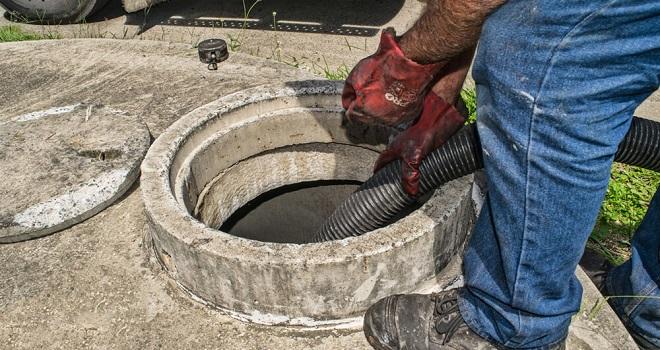
You may choose to add a septic tank treatment that helps the growth of active bacteria in your septic tank, which help break down the waste materials into sludge, reduces smell produced by your tank and prolong the periods between necessary tank emptying; online retailers offer a year’s supply of bioaugmentation products from around £20 to £40.
Rat Infestation in Drain System
Rats are traditionally known to live in sewer systems which provide food, water and shelter for the animals but if your external drains are uncovered, or you have cracks or holes in your walls, you may find yourself host to a rat infestation in your home or business.
The tell tale signs of a rat infestation are:
- Droppings
- Chewed items such as food containers
- Ammonia-like smell resonating in your property
All of these are tell-tale signs you have a vermin problem in your property, but sometimes their presence is less obvious. It’s possible that during a drain inspection rats will be discovered; they are avid swimmers and make their nests close to their food sources, which is likely to be in your property.
If rats are discovered you will need to dispose of them; there are numerous disposal methods of rats that can be either done yourself, or may require the help of a pest control service, depending on the severity of the infestation. The method of extermination used can affect the cost, so consider your options; Lethal and non-lethal traps can be set, or poison bait may be used.
A single humane rat trap costs around £12 to purchase, but you will need to consider where and how best to release the animal once caught.
Lethal rat traps average £6 per unit, and poison bait can cost as little as £10 per kilogram, but once dead, you will have to safely dispose of the corpses yourself.
Because rats carry diseases and other pests, make sure to take necessary health and safety precautions such as protective gloves and secure the dead rats in sealed plastic bags to avoid any diseases spreading – wash your hands and equipment thoroughly after use.
If you hire a professional for the task they will dispose of the animals themselves once they have been caught or killed.
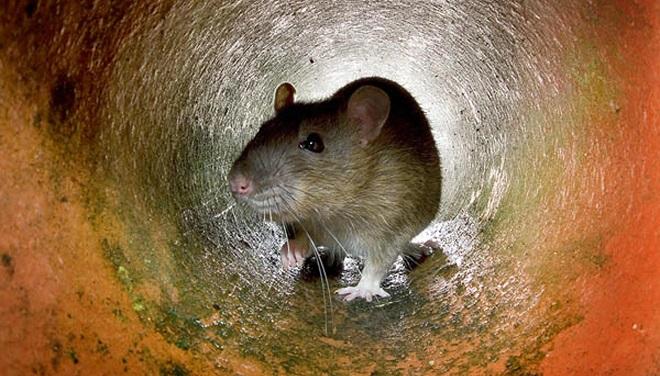
To prevent a rat infestation consider installing a non-return valve on your drains, which will only allow water and waste to travel in a single direction through your plumbing, creating an impassable barrier for rats in your drainage system.
The average cost of a drain non-return valve varies from £20 - £60, with an expected additional cost of around £50 for installation from a qualified drain expert.
In addition, a good precaution to take to prevent rats in your property is to dispose of waste in a secure bin, ensure food stuffs are not left out in the open and avoid placing items that could provide shelter for rats against your home.
Cost of Relocating or Replacing a Drain
Persistent clogging issues within your drains is an indicator of bigger issues with your pine lines. In some cases, it may be necessary to replace or relocate your existing drains either because the passage is too narrow to meet demands, they are in the way of an extension or your drains may have collapsed or undergone extensive damage that cannot be mended.
If you need to move a drain you will have to seek permission from your local water authority and ensure that the relocation is in adherence to UK building regulations before any work can begin, with the application alone costing up to £1300 depending on your provider.
You will also likely need to undertake a drainage survey to assess the layout of your pipes and any connecting neighbouring pipes that may be affected by the move, this service usually costs around £400, though varies depending on your location within the UK and which service provider you choose.
On average, you can expect the relocation costs to total around £4700, though this cost is dependent on a multitude of factors including the size of the pipe being replaced or relocated, the timeframe in which it takes for the job to be completed and the cost of your application.
For more information about drain relocation, click here.
FAQs
Sources
https://www.architecturelab.net/what-is-pipe-relining-and-how-does-it-work/
https://www.clearfirst.co.uk
https://www.thefloodcompany.co.uk
https://www.BPCA.org.uk
https://www.citizensadvice.org.uk/consumer/water/water-supply/sewerage/who-is-responsible-for-repairing-drains-and-sewers






